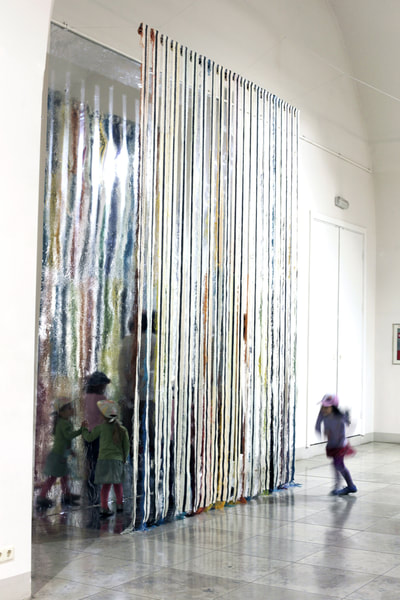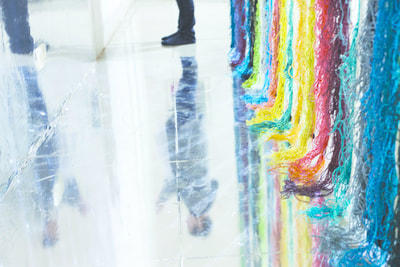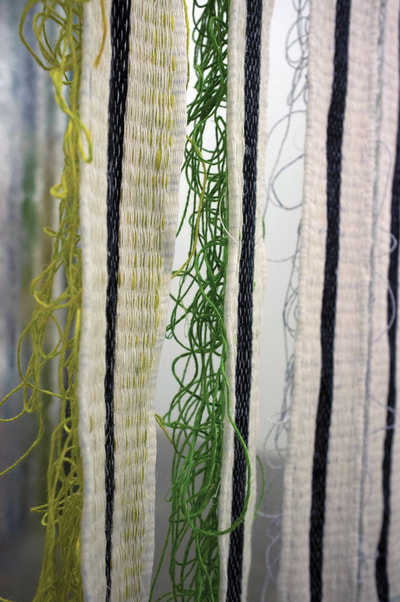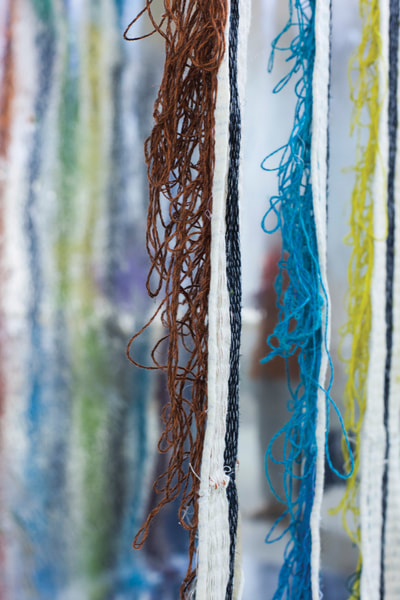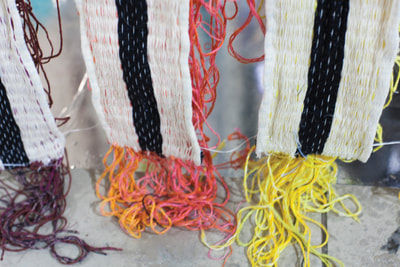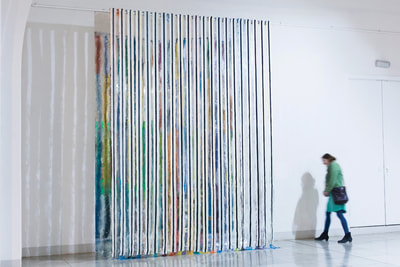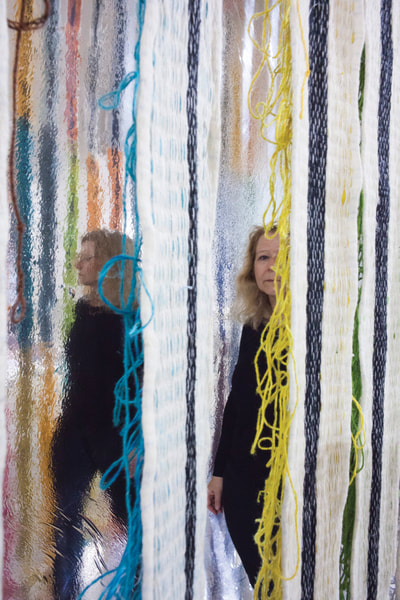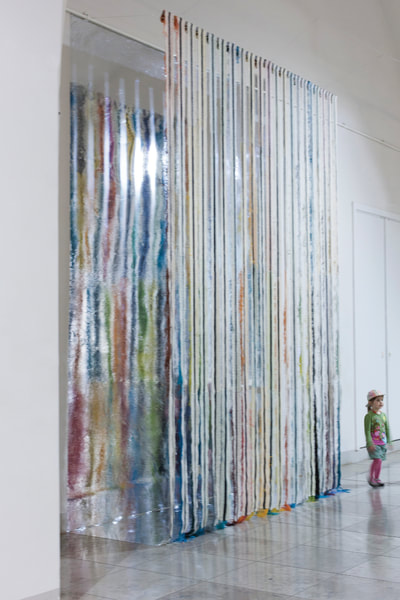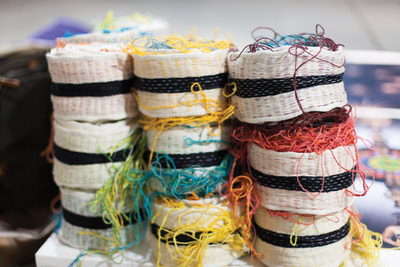WORKS
Layer / SJIKT
Trafo Kunsthall 2012
Exhibition Hall Arsenals, Riga 2015
LAYER : 420 X 290 X 95 cm
Layer consists of 21 woven pieces, each 10 x 420 cm and a foil surface on wall and floor.
Exhibition Hall Arsenals, Riga 2015
LAYER : 420 X 290 X 95 cm
Layer consists of 21 woven pieces, each 10 x 420 cm and a foil surface on wall and floor.
|
ABSTRACTION SET FREE Layer was first shown to the public in Solveig Aalberg’s exhibition Passing Through in Trafo Art Hall in 2012. The work is large but airy (420 x 290 x 120 cm). A series of narrow, hand-woven vertical picture fields in cotton and linen hang freely away from the wall and create a space we can enter. Reflective foil in the same format has been mounted on the wall that Layer is placed against, allowing for the work to be repeated in a pebbled and more fluid, blurred version. Movement and transposition In many ways, Layerpresents a general idea of Aalberg’s method. Everything begins with the drawing. She works with movement and transposition in the smallest details and in the overall lines, quite literally. When the drawing is translated into fabric, the lines become threads, and in the same process exquisitely coloured. There is a perfected palette throughout Aalberg’s oeuvre that we see again in Layer. We find layers of colour of the threads behind and in front, from the sides and across. The creative is also found in hidden places The horizontal in the weave is like a page of an abstract narrative written on both sides. The front and back generate a language of form. The interaction of the front and back of the fabric tells the observer that the creative is also found in hidden places. The hierarchy is not given- the parts closest to the wall have an equal place when the work is created. Lightness and pressure In the drawings that precede Layer, the limitations lie in the two-dimensionality and in the system where the lines are created. In the realisation of the weave, these lines take off and become space. The fixed frame forms a contrast to the wild run of the threads on both sides of the warp. The mounting with its long loose fields allows the work to maintain its dynamic character and makes the parts move in the encounter with the viewer. Lightness and pressure, the fixed form and the looseness are in dialogue and lines and threads both represent the same. Layer Horizontally, the coloured layers rest in an interweaving of complementary meetings, with black and white as a general respite for the eyes, as a frame for the narratives of the colours. The title Layer can act as a verb: layering. In this context, the experience of the public can highlight precisely how the work is divided up as we move in front, from the side, inside and behind. The layers cease to be and provide space for the viewer’s gaze. Surface and form are interdependent as an illusion, but the dynamics and the movement depend on the viewer. Representation When we enter the space of Layer, we become part of the work as an unrecognisable reflection of ourselves, halfway between the fabric and the representation in the mirror image on the wall. Layerchanges as we walk along it, or to and from it. Optical colour variations are created. We affect and interfere with the space and the lines, while unable to see ourselves clearly in the mirror image. This detail adds depth to the work and fixes our thoughts on the movement in the layers, the movement in ourselves. When we follow the threads downwards, we see that the floor is also a mirror. The feet meet our own feet and a new representation of the room is realised at one hundred and eighty degrees around. In this way, Layerstarts a game and a study: the journey of the materials from the tactile to the image, the space where we are, our movement, the mirror images of the mirror images. Abstraction set free. Gudrun Eidsvik |

